
Under the Whyte notation for the classification of steam locomotives, 0-4-0 represents one of the simplest possible types, that with two axles and four coupled wheels, all of which are driven. The wheels on the earliest four-coupled locomotives were connected by a single gear wheel, but from 1825 the wheels were usually connected with coupling rods to form a single driven set.
Railmotor is a term used in the United Kingdom and elsewhere for a railway lightweight railcar, usually consisting of a railway carriage with a steam traction unit, or a diesel or petrol engine, integrated into it.

The South African Railways Class 11 2-8-2 of 1904 was a steam locomotive from the pre-Union era in Transvaal Colony.

The South African Railways Class 10 4-6-2 of 1904 was a steam locomotive from the pre-Union era in Transvaal Colony.
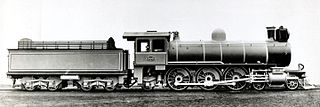
The South African Railways Class 9 4-6-2 of 1904 was a steam locomotive from the pre-Union era in Transvaal Colony.
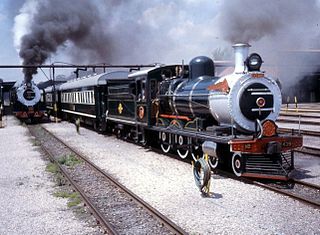
The South African Railways Class 6 4-6-0 of 1893 was a steam locomotive from the pre-Union era in the Cape of Good Hope.
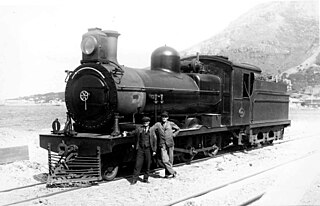
The South African Railways Class 6A 4-6-0 of 1896 was a steam locomotive from the pre-Union era in the Cape of Good Hope.

The South African Railways Class B 0-6-4T of 1893 was a steam locomotive from the pre-Union era in Transvaal.
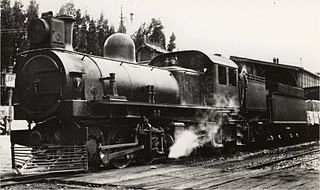
The South African Railways Class KM 0-6-0+0-6-0 of 1904 was an articulated steam locomotive from the pre-Union era in Transvaal Colony.

The South African Railways Class MD 2-6-6-2 of 1910 was a steam locomotive from the pre-Union era in Transvaal.

The South African Railways Class MF 2-6-6-2 of 1911 was a steam locomotive from the pre-Union era in Transvaal.

The NZASM 19 Tonner 0-4-2T of 1891 was a South African steam locomotive from the pre-Union era in Transvaal.

The Pretoria-Pietersburg Railway 26 Tonner 0-6-0ST of 1896 was a South African steam locomotive from the pre-Union era in Transvaal.
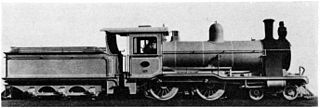
The Cape Government Railways 3rd Class 4-4-0 of 1903 was a South African steam locomotive from the pre-Union era in the Cape of Good Hope.

The Cape Government Railways Railmotor of 1906 was a South African steam railmotor locomotive from the pre-Union era in the Cape of Good Hope.
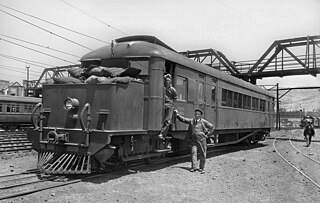
The South African Railways Clayton Railmotor of 1929 was a steam railmotor.
The South African type XM2 tender was a steam locomotive tender from the pre-Union era in Transvaal.
The South African type XC tender was a steam locomotive tender from the pre-Union era in Transvaal.
The South African type XS tender was a steam locomotive tender from the pre-Union era in Transvaal.

Under the Whyte notation for the classification of steam locomotives, 0-4-0+4 represents the wheel arrangement of no leading wheels, four powered and coupled driving wheels on two axles and four trailing wheels on two axles mounted in a bogie.

















